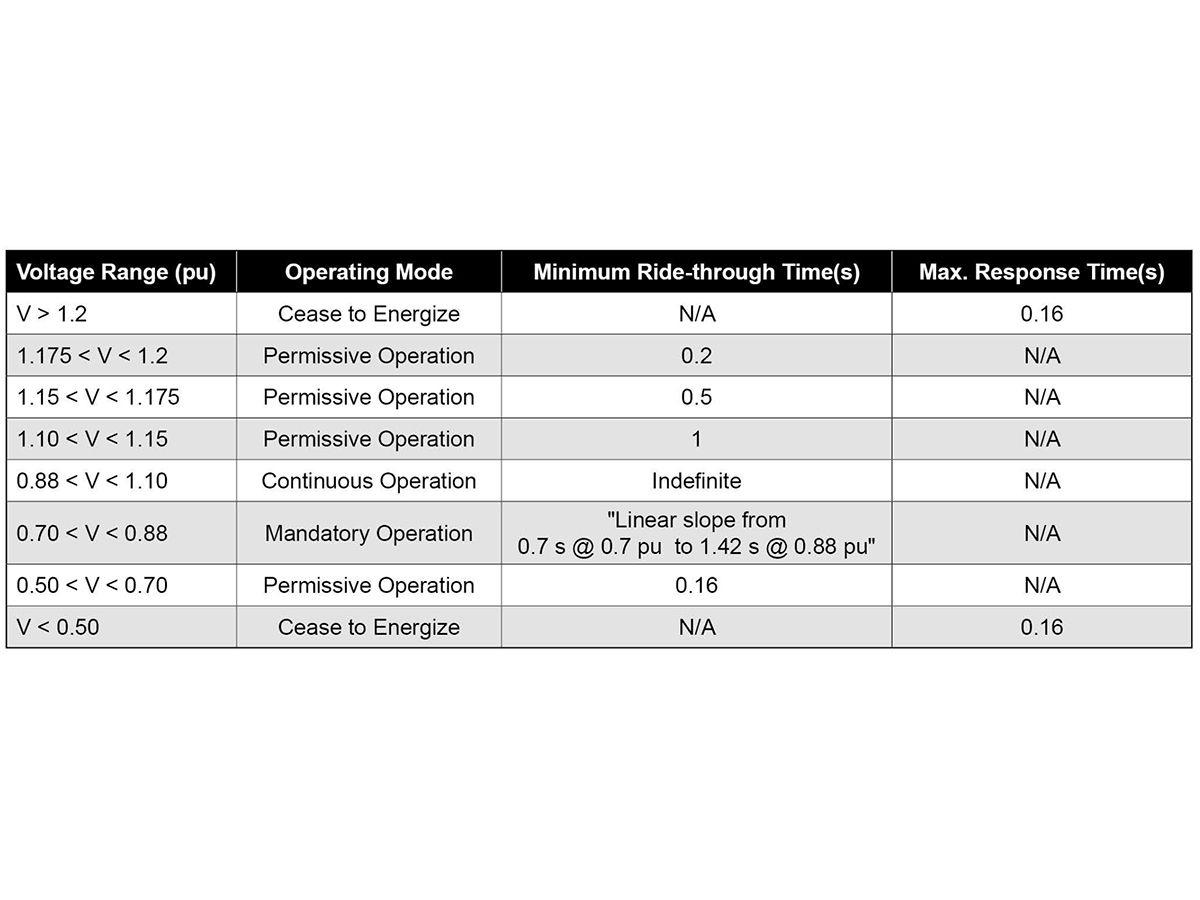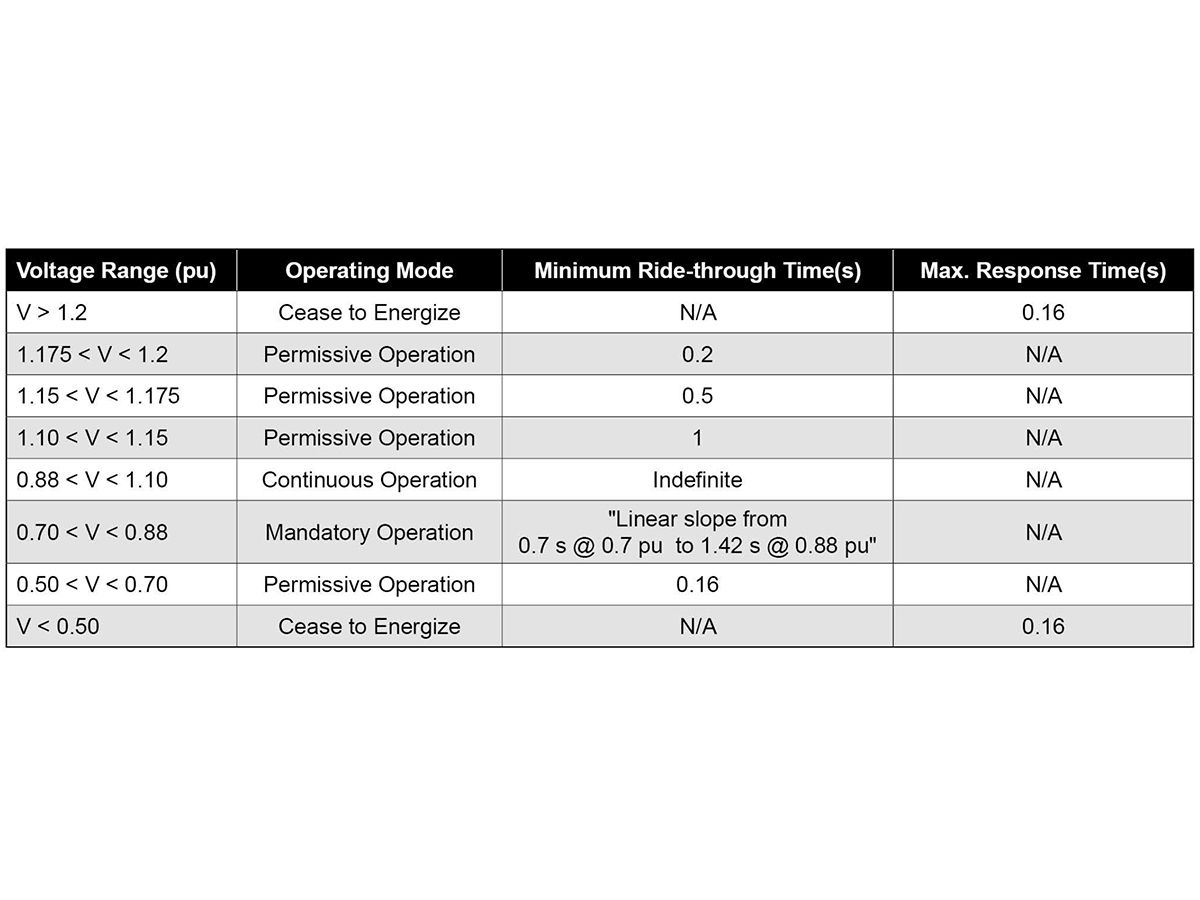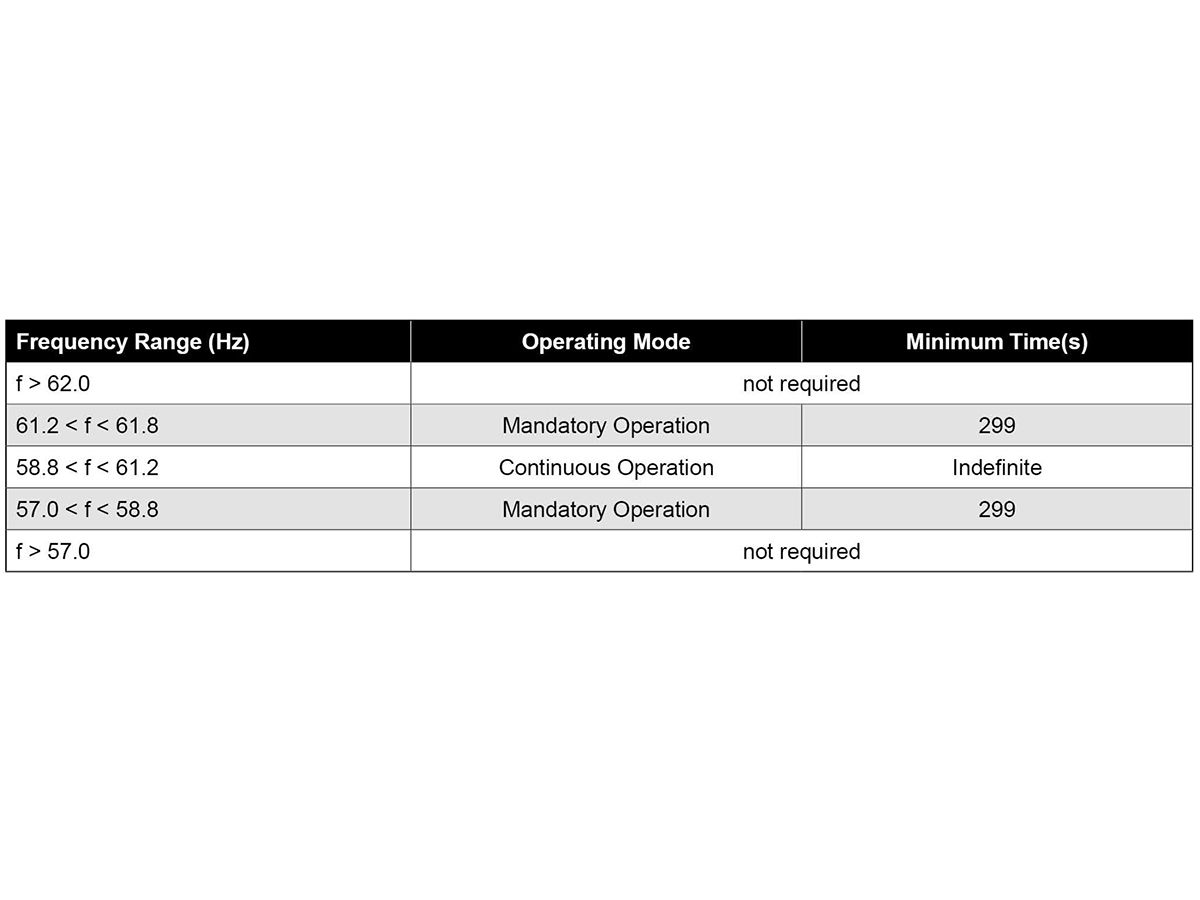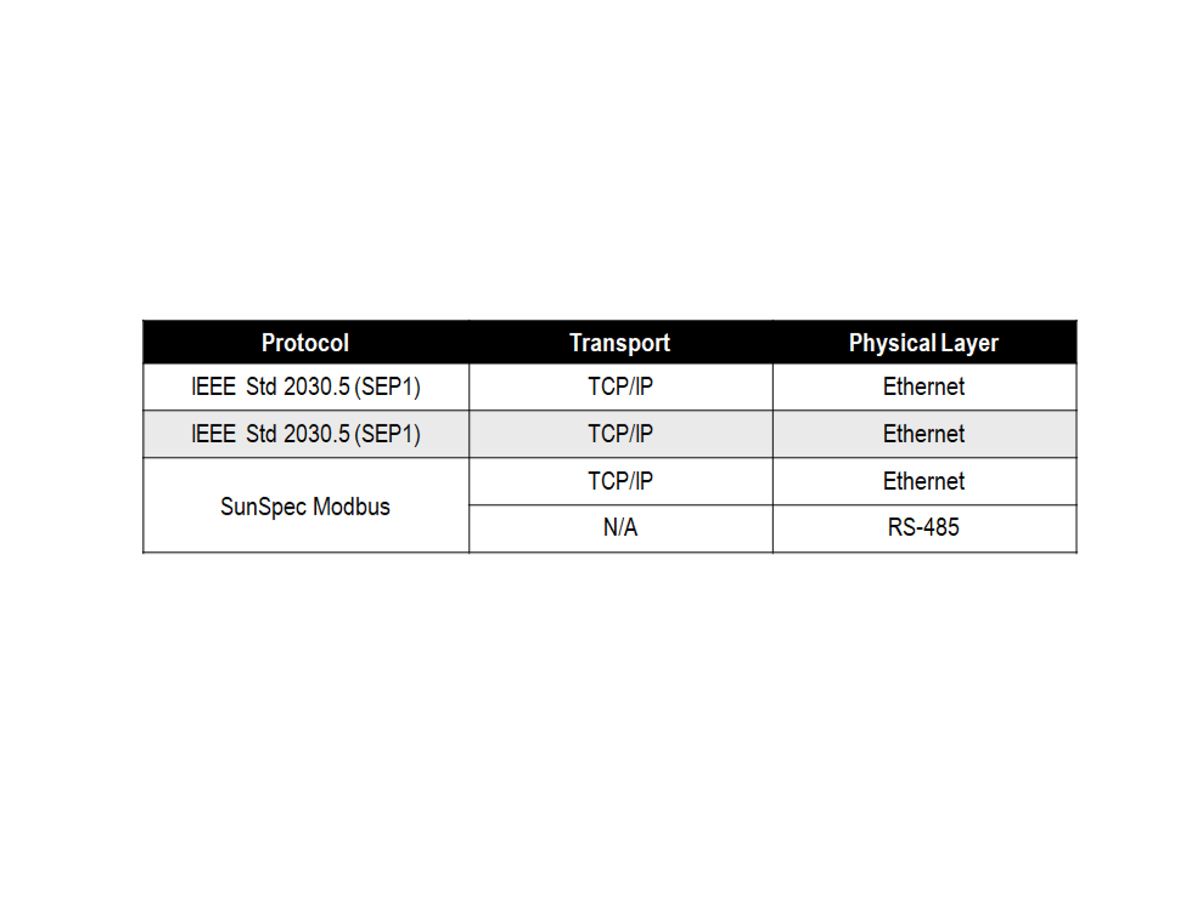

Sign In
Welcome! Sign In to personalize your Cat.com experience
If you already have an existing account with another Cat App, you can use the same account to sign in here
Register Now
One Account. All of Cat.
Your Caterpillar account is the single account you use to log in to select services and applications we offer. Shop for parts and machines online, manage your fleet, go mobile, and more.
Account Information
Site Settings
Security
Generator Set Compliance with IEEE Standard 1547
Abstract
This paper provides an overview of IEEE 1547 (Standard for Interconnecting Distributed Resources with Electric Power Systems), which provides criteria and requirements for the interconnection of distributed generation resources into the power grid.
Introduction
The U.S. Energy Act calls for the adoption of IEEE Standard 1547 for distributed generation resources (DER) connected to the grid. The original standard was first published in 2003. In 2018, the standard was extensively revised incorporating fault ride through capability requirements and multiple grid support functions. The new requirements are far more stringent reversing previous utility operating practices of disconnecting upon encountering grid events. Now, DERs are required to ride-through grid events and support the grid during such events.
IEEE Standard 1547-2018 triggers compliance to two other standards: 1) IEEE Standard 1547.1-2020, which is the companion standard for compliance testing, and 2) UL 1741, Edition 3, published in September 2021, which is the certification standard attesting the DER is compliant to IEEE Standard 1547-2018 and was tested according to IEEE Standard 1547.1-2020. Enforcement of the standard is expected to be phased in during 2022, giving manufacturers a short time to certify their equipment. Adoption of the standard will not be uniform, with Hawaii being the earliest adopter announcing an effective date of March 31, 2022, and California targeting third quarter 2022. States in the Northeast are expected to follow California, and other states would lag in their adoption of the standard.
Applicability and Exceptions
IEEE Standard 1547 establishes criteria and requirements for interconnection of distributed energy resources with electric power systems (EPSs) and associated interfaces. The stated technical specifications and requirements are needed for interconnection and interoperability of distributed energy resources and they should be sufficient for most installations.
The standard does not apply to automatic transfer schemes in which load is transferred between the DER and the EPS in a momentary make-before-break operation provided the duration of paralleling the sources is less than 100 ms.
The standard partially applies to DER systems designated as emergency or legally required by the authority having jurisdiction, and to standby DER that is only operated in parallel to the grid for testing purposes (no more than 30 times a year) or during load transfer for a period not to exceed 5 minutes. Emergency and standby DERs may cease to energize the Area EPS or may separate from it without limitations and are exempt from the following main requirements:
- Voltage disturbance ride-through requirements
- Frequency disturbance ride-through requirements
- Interoperability, information exchange, information models, and protocols
- Intentional islanding requirements
Critical Requirements
IEEE Standard 1547 is written in technology neutral terms. Unlike other international grid codes, requirements are not directly linked to specific technologies, e.g., inverters, rotating machinery, etc. Instead, different performance categories are defined to accommodate a range of DER technologies. Guidance is provided to authorities governing interconnection requirements regarding the assignment of performance categories based on grid conditions, DER types, and levels of penetration. There are two performance categories (A & B) for Voltage Regulation requirements, and three categories (I-II-III) for ride-through capabilities. While not mandated, the intent is that rotating machine based DER would be required to meet categories I & A, inverter based DER would meet categories II & B or III & B depending on the level of DER penetration on the feeder. Note that performance category B is more stringent than A, and III more than II, and II more than I.
Required Reactive and Active Power Controls
The standard requires a DER to provide voltage regulation capabilities by changes on reactive and active power. The following modes of controls are required and the majority of them are mutually exclusive:
- Constant power factor mode (all categories)
- Constant reactive power mode (all categories)
- Reactive power output as a function of voltage (all categories)
- Reactive power output as a function of active power output (category B only)
- Active power output as a function of frequency (all categories)
- Active power output as a function of voltage (category B only)
Measurement Accuracy
In order to achieve targeted levels of performance on voltage, reactive, and active power regulation, minimal accuracies are specified for the measurement of related variables within the DER. Table 1 specifies required minimum measurement accuracies.







Most of these accuracies are achievable in typical genset controls, but some have not been traditionally measured to the higher levels of accuracy now specified. In the past, there has been no need to measure frequency to a precision of 10 MHz. Likewise, time measurements have been primarily used for event time stamping, and precise time measurements lie within protective relay functions. In some cases, genset controls measurements are heavily filtered and it should be verified that the filtering falls within the allowable measurement windows given in the standard.
Mandatory Tripping Requirements
DERs, gensets in the industry, are required to detect Area EPS faults, such as short-circuit faults or open phase conditions, and trip accordingly. Also, abnormal voltage and frequency tripping conditions are specified. Tables 2 and 3, give, respectively, thresholds for voltage (category I only) and frequency (all categories) tripping.
The must trip conditions are specified in terms of not later than the specified values, while the ride-through requirements are specified in terms of tripping not sooner than specified values. Whenever there is a gap between the ride-through and the tripping thresholds the DER is allowed to either continue to operate or trip. This creates a buffer zone where trip setting can be set to avoid out of compliance tripping. Tables 4, 5, and 6 show voltage ride-through requirements for categories I and II, respectively, and frequency ride-through requirements for all categories.
Island Detection
The standard requires that for an unintentional island in which the DER energizes a portion of the Area EPS through the PCC (point of common coupling), the DER must detect the island, cease to energize the Area EPS, and trip within 2 s of the formation of an island. If a DER falsely detects an island that does not actually exist and interrupts its ride-through during a grid event, the DER would be considered noncompliant.
Most inverter based DERS are equipped with autonomous islanding detection means. To ensure robustness on islanding detection by inverters the standard specifies test methods that involve resonant circuits at grid frequencies. Given that the standard is technology neutral, the same testing methodology is to be used for synchronous generators. It is unlikely that synchronous generators using some form of autonomous islanding detection would be able to pass the islanding detection compliance tests. Push-pull frequency methods for islanding detection have been proven to be ineffective for islanding detection under the given testing conditions. Other known methods are not compatible for implementation with rotating machinery. External means for islanding detection would probably be required. Some relay protection manufacturers claim that their equipment is IEEE 1547, and they may be able to provide a solution. However, it is likely that utilities may require additional protections such as direct transfer trip (DTT). A more affordable alternative would be advanced powerline carrier systems. These systems typically come at a fraction of the cost of DTT systems.
Interoperability
The standard requires that a DER must have provisions for a local DER interface capable of communicating to support the information exchange communication requirements specified in this standard for all applicable functions that are supported in the DER. For information interoperability, these communication capabilities use unified information models and non-proprietary protocol encodings based on international standards or open industry specifications.
The information to be exchanged falls into the following four categories:
- Nameplate information (read only information indicative of the as-built characteristics of the DER)
- Configuration information (read or write information indicative of the present capacity and ability of the DER toperform functions)
- Monitoring information (read only information indicative of the present operating conditions of the DER)
- Management information (read or write information used to update functional and mode settings for the DER)
The DER must support at least one of the protocols specified in the Table 7. The protocol to be utilized may be specified by the Area EPS operator. Additional protocols, including proprietary protocols, may be allowed under mutual agreement between Area EPS operator and DER operator.
Summary and Conclusions
Distributed generation resources will need to comply with IEEE Standard 1547 if they are to connect to the electrical grid. The 2018 edition of the standard has been extensively revised requiring fault ride-through capabilities, and several additional functions have been added for grid support purposes. The companion compliance test standard, IEEE Standard 1547.1, was published in 2020, and the associated certification standard UL 1741, Edition 3 was just published on September 28, 2021. Enforcement of IEEE 1547 requirements is expected to be phased in during 2022, but adoption is not going to be uniform, with some states being early adopters and others lagging behind.
At the time of this writing, most gensets (from any manufacturer) would not be in compliance with the new version of the standard, and they would not be allowed to connect to the grid if the local jurisdiction enforces the standard. The path to demonstrate compliance would be through UL1741, Edition 3 certification*. Note that the standard does not apply to automatic transfer schemes in which load is transferred between the DER and the EPS in a momentary make-before-break operation provided the duration of paralleling the sources is less than 100 ms. Therefore, standby generators would be typically exempt from the standard, but grid connected generators would have to comply with the standard. It is outside the scope of this paper to point out what requirements (within the 134 pages of IEEE Standard 1547-2018) would, or would not, be met by most generator sets offered by the industry, but to raise awareness of major changes driven by the new standard.
*Caterpillar, while closely following the regulation changes, is in the process of introducing grid compliant productsconcurrent with the effectivity date of the regulations. Consult your Cat dealer for specific adoption timeframes foryour local jurisdiction. Please refer to the Dealer Locator at www.cat.com to find your local dealer.






